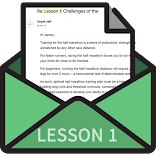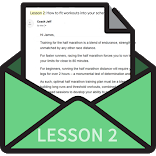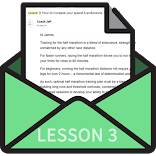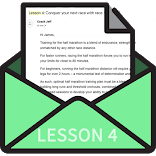
CHICAGO MARATHON TRAINING EMAIL COURSE
Lesson 1: Pace Change Workout for Chicago
Most runners think that a flat course like the one for the Chicago Marathon makes it easier to run fast.
While it definitely makes it easier than a hilly course, a flat marathon course like Chicago presents its own unique challenges.
Specifically, the tendency for runners to fall off pace and have a difficult time picking the pace back up. The flat course often lulls runners into slowly creeping their pace slower.
To prevent this, implement what we call a “pace change” workout in your marathon build-up that will help you prepare physically (and more importantly, mentally) for this unique challenge at London.
Here’s how to do it.
- Start by running 2-3 miles easy, followed by 2-3 miles at a steady pace (about 10-20 seconds slower than marathon pace).
- Then, for the next 6-8 miles, alternate between half marathon and marathon pace each 800 meters.
- Finish with a mile easy. The total workout will be 11-15 miles, depending on your training level.
Obviously, this is a subtle difference in pace each 800 meters, but this accomplishes three things.
Most importantly is that the continual change in pace is a mental challenge. It takes focus to keep dialing the pace back and forth. This combats the “lull” you’ll experience on a flat course like Chicago.
Further, during the marathon, you’ll hit a rough patch where you’ll feel horrible and, at that point, you’ll likely slow down. Most athletes will soon feel a bit better and want to get back on pace. A workout like this helps you practice the skill of dealing with a subtle change in pace as you start to fatigue.
Finally, pacing is critical in the marathon, especially one where you can end up going out too fast. Learning the subtle difference between half and marathon pace in training will make it easier to recognize if you’re running too fast early on.
When to Include the Pace Change Workout in Your Training
You’ll want to begin course specific training about 12-14 weeks before the race.
Starting early gives you a chance to practice more of the workouts that will help you conquer the course. Plus, you can implement a progression so you’re not jumping into a difficult workout.
You can use it as a supplement for a normal tempo/threshold session or as a shorter long run, depending on how it best fits your plan.
I recommend running this workout 2-3 times and using a progression of volume. Here is the progression…
Your first workout, run 2 easy, 2 steady, 6 alternating, 1 cool down for a total of 11 miles.
Your second workout, 2 easy, 2 steady, 8 alternating, 1 cool down for a total of 13 miles
Your final progression, 3 easy, 3 steady, 8 alternating, 1 cool down for a total of 15 miles.
If you like this workout idea and want to learn more about how to prepare your training specifically to the Chicago course, check out our free 4-part email course below.
Ready for More?
This FREE 4-Part Email Course is the ultimate resource for conquering the Chicago Marathon course.

Lesson 1
Surge Long Runs - The Secret Weapon to Conquering the Chicago Course

Lesson 2
Your Physiological Optimal Long Run Pace

Lesson 3
How to Handle Running a Race in Windy Conditions

Lesson 4
Mile-by-Mile Race Plan for Every Section of the Course
Ready to Train Specifically for the Chicago Marathon Course?
If you’re racing Chicago with the goal of recording a PR or running your best time, knowing how to target your training specifically to the demands of the course is essential. You need to prepare your legs for the flats, develop your patience for the early miles, and prepare for the push to the often windy finish.
This guide will ensure you have everything you need for a PR performance!
Surge Long Runs – The Secret Weapon to Conquering the Chicago Course
In addition to teaching you how to surge to get through rough spots during the race or to get yourself back on pace when you’ve slipped, this workout also increases your ability to burn fat as a primary fuel source when running at marathon pace (a critical element to how fast you can run a marathon)
How to Handle Running a Race in Windy Conditions
There’s a reason they call Chicago the windy city and, unfortunately, wind is usually a factor in October. We’ll teach you how to factor in how much the wind will slow you down or speed you up so you van adjust your pacing and plan during the race.
Your Optimal Long Run Pace
Most runners aren’t running the correct pace for their long runs, which is preventing you from getting the full physiological benefit of the workout. We’ll give you the science behind the “why” of your optimal long run pace and an easy-to-use calculator to help you easily find yours.
Mile-by-Mile Race Plan
We’ll break down the course into each section so you know exactly how to pace yourself and mentally prepare yourself for each section of the course.
What other runners are saying about our webinars & Email Courses




